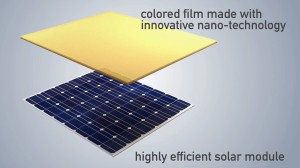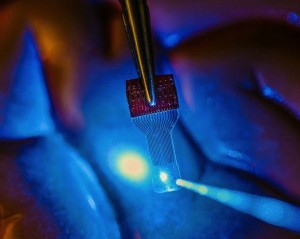
The technology can be applied on top of an existing module or integrated into a new module during assembly, on flat or curved surfaces.
Credit: CSEM
The Swiss company, Center for Electronics and Microtechnology (CSEM), has announced that they have developed the world’s first white solar modules. According to the company, this will allow for a more visually appealing solar module, which will blend into buildings to become virtually invisible.
The current blue-black solar modules are built to maximize sunlight absorption, whereas a white solar module was previously not a color option due to the fact that the color would generally reflect light, rather than absorbing it.
This from CSEM:
CSEM has developed a new technology to make white solar modules, with no visible cells and connections, a reality. It combines a solar cell technology able to convert infrared solar light into electricity and a selective scattering filter, which scatters the whole visible spectrum while transmitting infrared light. Any solar technology based on crystalline silicon can now be used to manufacture white – and colored – modules.


